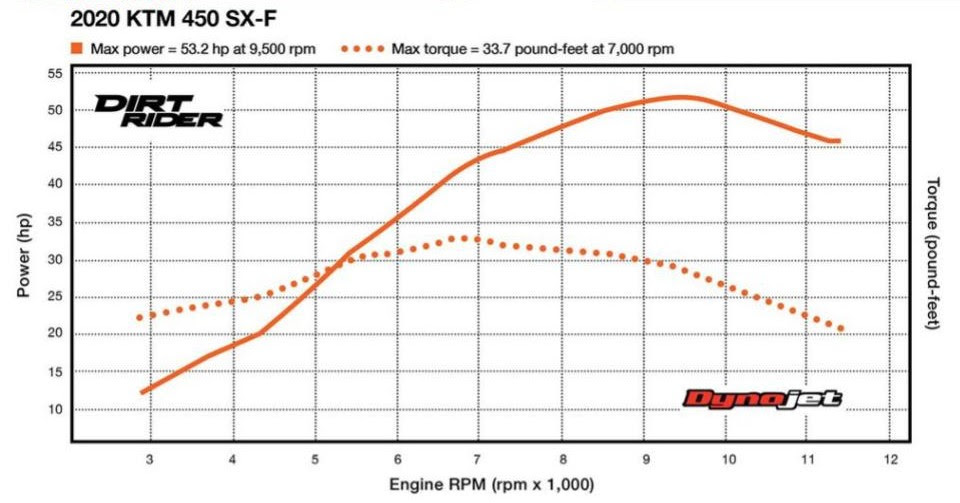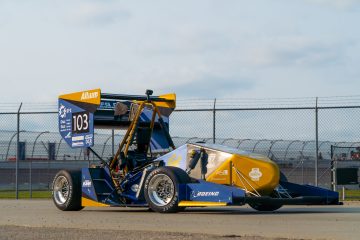
Welcome to our December 2020 Newsletter. Thank you for tuning in. In this edition, we cover the team’s focuses from the Fall 2020 semester on a subsystem-by-subsystem basis.

All team operations for the Fall semester have been at home due to the ongoing pandemic. Our team has used this time to research and develop current and future designs. We are experimenting with turbocharger development, a hybrid monocoque chassis, active brake bias, aerodynamic undertray, electronic shifting, as well as many other projects.

In addition to working on future projects, we are also preparing for FSAE California 2021. Competition has been divided into two parts: Knowledge and Validation. Dynamic events will be part of the Validation Event in the summer of 2021. We plan to compete in both of these events, with our participation in the Validation Event dependent upon the decision of public health officials. Held in the February 2021, the virtual Knowledge Event will consist of Design, Cost, and Business Presentations. The university is not allowing in-person meetings for any student organizations for the Fall semester, furthermore, our team is not allowed to access our facilities at the Richmond Field Station. A decision for the Spring semester is not clear yet, but our team hopes to be able to access our garage sometime in the Spring and be ready to compete in the 2021 FSAE California Validation Event.
Below are some of the projects our subsystems are working on.
Aerodynamics

For the last several years, Aero has used tetrahedral meshing to virtually create objects for testing in simulation. This is a painfully slow process in which our members often are required to leave a simulation running overnight to get the results of one slight change in geometry. This semester, we have been working to familiarize ourselves with Fluent Meshing, particularly polyhedral meshing. This process works 4-5x faster on average than our old process, however, we are still in the phase of validating the results of these simulations. We will be comparing our new findings and data with the results of older tetrahedral meshes which are based on previous tests carried out in Boeing’s wind tunnel. If Fluent Meshing works, we will be able to test far more iterations of aerodynamic elements, exploring more complex designs through each cycle.

Brakes + Driver Interface

BDI is excited to be designing a new pedal tray and pedal faces, with the new design being made from composite materials. These new designs take into account the weaknesses of previous pedals and the drivers’ specific preferences. This, combined with a further optimized pedal return mechanism, will make a drastically more refined pedal assembly that we cannot wait to test when it is safe to do so.
We have also been collaborating with Vehicle Dynamics in simulation to understand how to maximize corner speed with brake bias adjustments, and plan to develop a script to adjust the brake bias automatically depending on what type of braking the car is experiencing.
Business

Business has been working to make sure we hit the ground running when the team is able to return to work in person. We have been expanding our use of social media to engage with our community, as well as updating our website with more current information and new pages. We took part in the North Bay Science Festival this year in a virtual format and were thrilled to be able to inspire some local students. In addition, we have been working to get as much donated as possible. This includes common materials such as shop towels, safety glasses, tools, and other supplies we know we will need when we resume working in-person. We are also trying to financially prepare the team for what’s ahead through further research and outreach. Business also held our first “CDR” this fall, and we were thrilled to receive alumni feedback. We continue to welcome any feedback our community is able to provide, and we are excited for all that lies ahead.
Chassis

We have been working closely with Aero to analyze what we can do to help the aerodynamics of our car. Right now, we are focusing on slightly raising the front bulkhead and further reclining the driving position. The goal is to move the driver’s head as far out of the way as possible from the rear wing to reduce the effect of the dirty air coming off the helmet. Also in coordination with Aero, we are working to shift the position of our engine in the chassis to allow more room for the rear diffuser in the undertray. Finally, we have been researching a hybrid monocoque chassis, with the goal of possibly being able to implement it in a future car.


Drivetrain
As a subsystem, Drivetrain decided to stick with the design of B20 for B20/21 and spend extra time researching innovative changes for B22. Moving forward with B22, we plan on using the same Drexler differential and investigating how to select and optimize the ramp angle. We have found that it ultimately comes down to when we want the differential to lock: when the power limit (torque calculated from the engine) exceeds the traction limit (torque calculated from normal load). We used engine torque to determine the power limit and load transfer calculations to determine the traction limit at varying lateral accelerations. From there we can find the target Torque Bias Ratio (TBR) and correlate it to the ramp angle using the Drexler Formula SAE Torque Bias ratio handbook.

In addition to our research with the optimized ramp-angle, we have been working on stiffening the rear-wheel package to decrease vibration and compliance within the wheel assembly. By combining the wheel hub and outboard housing into one component, we were able to reduce the manufacturing-tolerance-stackup of the package. When used with a larger-diameter bearing, we were able to cut our compliance by more than half. Looking to the next few months, we are planning to solidify methods of preload and extend some of the changes we have made in the rear-wheel package to the front-wheel assembly.
Electrical
Electrical is looking to revamp our telemetry systems by upgrading our data logger to a RaceCapture live telemetry unit. This will allow us to observe our car’s performance metrics in real-time and retrieve data that we haven’t previously been able to log – including a live camera feed with data overlay. To take advantage of the new data stream, we will upgrade our dashboard to a custom LED display with our own graphics and interface tailored to the drivers’ preferences.

Electronic Systems
We are planning to redesign our steering wheel and our braking system. For our steering wheel, we are manufacturing a more ergonomic piece with room to incorporate more functions, notably brake bias and rpm lights. In addition, we have constructed a rig that allows for more flexibility in steering wheel position so that we can account for different drivers. This ties into our other project, the active electronic brake bias system. With adjustment controls integrated into our new steering wheel, we plan to account for the shift of weight in the car when braking by changing the ratio of brake pressure between the front and rear wheels to minimize brake lockups.

Engine

The engine team has been hard at work incorporating our Garrett 1036z Turbo into the B21 car! Because we are not redesigning the chassis for this year’s competition, we needed to make sure we did not exceed the 33 ft lbs limit that the B20 chassis was designed to.
Another main part of the subsystem change has been the incorporation of electronic shifting. This is a collaborative project with the new Electronic Systems team. In the past, we have used a pneumatic system that was prone to leaks. We decided to buy a solenoid linear actuator that we are in the process of testing right now.
We would like to thank Anthony Chan, Taewon Kim, and of course, Rohan Patel (Electronic Systems) for helping create and test the linear actuator setup. This setup will be used to get the technical specifications of the actuator itself since it was missing a data sheet.

Suspension
Suspension is currently working on designing new rockers. We are quite far along with one design in particular (below) which we are currently finely adjusting in response to compliance testing and manufacturing constraints. Another project we are working on is exploring different materials for constructing our A-arms. Most suspension components on the car are 4130 steel and 6061 aluminum. We are investigating replacing them with carbon fiber, stainless steel, or superalloys depending on how all of our simulations go and what is affordable.

Vehicle Dynamics
Despite the lack of physical access to the car, VD has continued to work on several projects virtually. Lapsim, our full vehicle model, has had two updates. First, several bugs in the tire data fitting functions have been fixed, and fitting tire lateral force is now working better. VD has also been working with BDI and ES on electronically adjustable brake bias. We worked to evaluate a brake-bias-by-speed system through Lapsim. The system corrects for additional forward weight transfer under braking caused by Aero loads. We saw some moderate gains in braking performance, but there is more work to be done before a definitive decision can be made on whether it is worth adding it to the car.

There are some concerns that B20’s direct-actuated front suspension may have the potential to buckle under high load. VD has designed alternate front-suspension geometry that could be hot-swapped onto B20 in the case that this becomes an issue, in parallel to Suspension’s efforts to improve the component in question.

To assist Aero with their cornering simulations, VD created a tool that works on top of lapsim to output vehicle slip angle, front wheel steer angles, and vehicle speed, given corner radius. In combination with some statistics about the corner radii of typical corners on FSAE tracks, this allowed Aero to more accurately position the car in a curved fluid domain to simulate cornering. VD is now gearing up to design B22 suspension points, which will have to accommodate changes to the chassis as a result of Aero’s new undertray, and the increased size of a turbocharged engine.
We are so thankful for the continued engagement of our community. Going forward, we plan to release four comprehensive newsletters a year, including our first in February with the results from the Knowledge Event in Competition. In addition to these four, we will also send out a short newsletter each month starting in March, with these going in-depth on three subsystems each. We hope this new format will allow our readers to stay more up to date with our work.
If you are an alum and would be willing to let us feature you on social media, contact juliapastis@berkeley.edu. We are hoping to post a few alumni’s stories to show how amazing graduates of our team are.
Thank you again for your support. BFR hopes everyone is doing as well as possible with the circumstances, and now more than ever appreciates the alumni, sponsors, and community who make this team what it is.
Want to receive the latest updates? Sign up for our mailing list!

